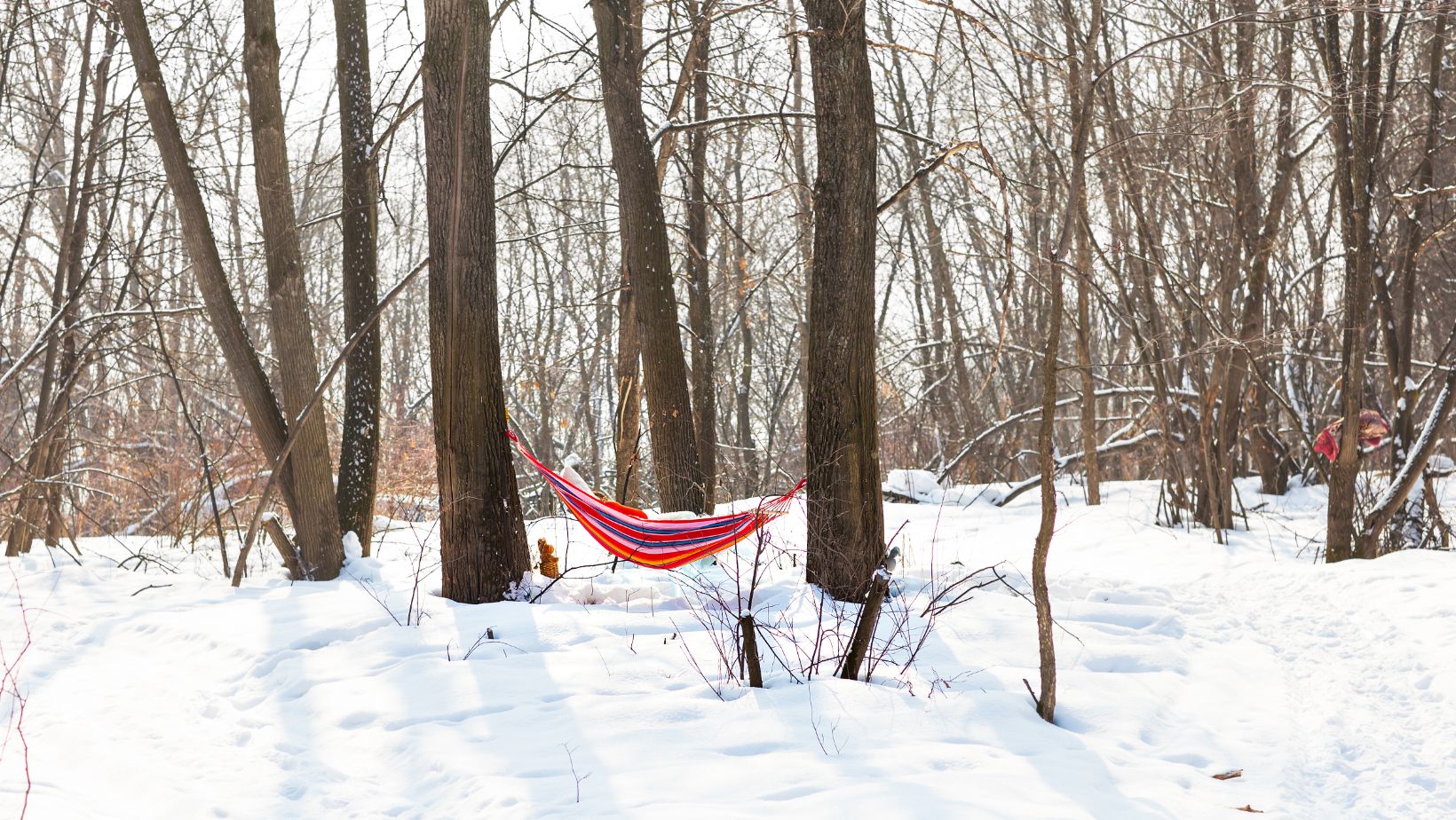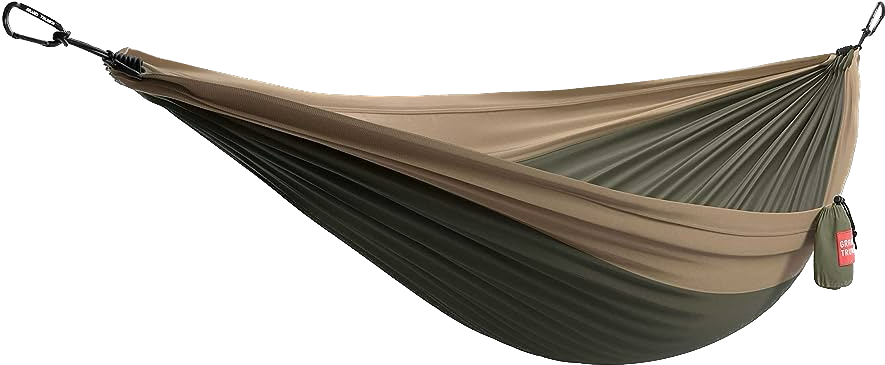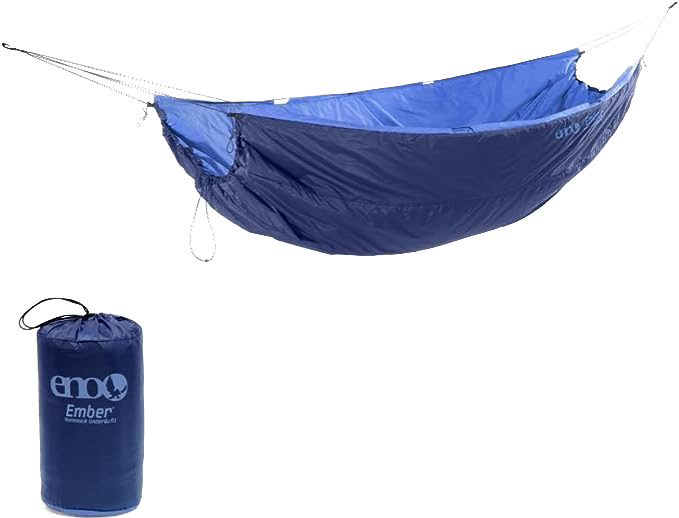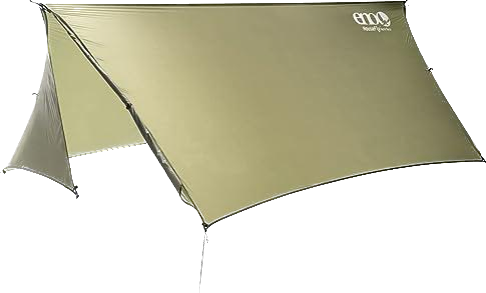Winter is coming, and you might be wondering, “Can you leave a hammock outside in the winter?” Fear not, for we have prepared a comprehensive guide that will teach you how to protect your hammock and continue enjoying it, even in the coldest months.
Short Summary – Can You Leave a Hammock Outside in the Winter?
Leaving a hammock outdoors in winter can be done if precautions are taken. Use a hammock cover or tarp to shield it from snow and moisture. Regularly inspect for any weather-related wear or freezing damage. Overall, the hammock will be better protected by bringing it indoors during the winter.
- Winter weather can damage your hammock, so proper winterizing is essential.
- Use a cover, clean it well, and store it indoors when not in use.
- Be sure to take proper care of your hammock stands. Wood stands need extra care while metal should be weather treated.
Winter Weather and Your Hammock

Effects of Leaving Your Hammock Outside During the Winter
Winter weather can be a hammock’s worst enemy, threatening its durability and lifespan. From freezing temperatures and snow to wet conditions, you’ll want to understand the effects of weather on your hammock and how to protect it.
Let’s discuss the challenges faced by hammocks during winter and introduce you to the different ways to shield them from damage.
Weather Resistant Hammocks
While most hammocks are designed to handle some weather exposure, winter conditions are harsh and can take a toll on their materials and overall structure. Some of the best outdoor hammocks, like the weatherproof elltex hammocks, still suffer from being left outside in the snow.
By protecting your hammock during the winter months, you’ll ensure that your hammock stays in tip-top shape throughout the season.
Let’s take a closer look at a hammock’s weather-resistant properties along with the specific threats posed by varying weather conditions, such as snow, ice, freezing temperatures, and wet conditions.
Snow and Ice
Snow and ice are first on our list as they are expected in the winter and can cause considerable damage to your hammock.
Leaving a hammock outside when it’s snowing is a bad idea. One reason is the hammock is getting soaked by taking all that moisture into the hammock material. When you pair this with the weight of the snow building up, hammocks will begin to stretch, sag, and potentially tear.
Additionally, the constant exposure, freezing, and thawing of the snow and ice can weaken the materials of the hammock. Whether you’re using one of those parachute silk hammocks or one made from traditional fabric the integrity of the hammock will be detoured. Cotton hammocks are probably the most susceptible.
What I’ve typically seen is stitching begins to wear down and fray. As soon as you apply weight or get into your hammock those weakened areas will give and even tear. Ultimately, the fix is simple and very easy to do.
When you’re expecting heavy snowfall or icy weather bring your hammock, hammock straps, and hammock stand inside. Prevention is the easy and best option to avoid all the negative effects of snow and ice. Not to mention you’ll also avoid mold.
If you have a rain forest hammock or one made from a less durable material, it’s even more important to keep it protected from these moist conditions, including the occasional odd rain shower.
Freezing Temperatures

Freezing temperatures should be another major concern for hammock owners during winter. When exposed to sub-zero temperatures, your hammock and hammock straps can become brittle and more prone to damage. Not to mention the tree trunk, branches, or hammock stand you’re anchoring from.
When you’ve left your hammock outside in winter conditions, be sure to check the fabric and straps before getting back in your hammock. Even if you’re hammock is extremely tear-proof, there’s still a chance that your straps or anchor points are weak from exposure to sustained bad weather. This includes the elltex hammock or any other weather-resistant hammocks on the market.
One thing that people often overlook is the sun exposure to your hammock. When you leave your hammock outdoors, it can get too much sun.
Like most equipment, prolonged exposure to the sun can bleach out the color of your hammock and weaken the stitching and materials. This includes the same material in your hammock and your straps.
As mentioned earlier the best place to store a hammock is indoors when not in use. Which brings us to our next step/option.
Using a Hammock Cover
If you must leave your hammock outside during the winter, I highly recommend covering it by either using a hammock snake, cover, or storing it in a dry area, protected from the sun.
A hammock cover is typically used to protect hammocks from the rain, but can work for snow as well – especially from the harsh winter weather. These covers are designed to shield your hammock from moisture getting in your hammock and uv rays weakening the material.
There are various hammock covers and sleeves available on the market, ranging from simple tarps to more elaborate designs tailored specifically for hammocks. When choosing a cover try looking for the following:
- Long enough to extend at least 1 foot beyond each end of your hammock.
- Water-proof or resistant material
- Find one according to your needs meaning lightweight vs durability. Are you a frequent backpacker needing a light pack/hammock cover, or a backyard hammock goer who wants to hammock year-round?
- Hammock covers that will address specific weather conditions you’ll be facing. Thicker covers for snow, lighter ones for just rain, and everyday moisture.
A well-fitting, durable cover can go a long way in preserving the life of your hammock during winter.
Hammock Stands and Accessories in Winter

Hammock stands, straps and accessories can also suffer from winter weather. Metal stands can be prone to rust, while wooden stands may require treatment to prevent rot and decay. Additionally, hammock straps can deteriorate and even begin to fray in some areas.
In this section, we’ll discuss the challenges faced by hammock stands and accessories during winter, as well as share tips for maintaining and protecting them from the elements.
Metal Hammock Stands
Metal hammock stands, while durable and sturdy, can rust and break down after being left outside during the winter. Especially when exposed to moisture and wet conditions during winter. However, if your hammock stand is treated with a rust-proof coating it should be fine for years.
Typically, a metal that is treated with rust-proof coating should last 35-50 years outside. So if you’re getting a new hammock stand, make sure that it has been properly treated. Non-treated metals only take 6-7 days to develop rust if continually exposed to moisture.
Solution: The first and easiest step is to select a hammock stand that has been treated to withstand the weather and moisture. Most hammock stands are designed to be outside so they are treated and prepared for rough weather. If you already have a hammock stand that isn’t treated, you can treat it yourself with a zinc coating or anti-rust coating.
The second solution is to use a cover or store your metal hammock stand indoors during winter to protect it from moisture and rust. If you notice any signs of rust, clean the affected area and apply an anti-rust coating to prevent further damage.
Wooden Hammock Stands

Wooden hammock stands, especially those made from European spruce wood, offer a more natural aesthetic, but need additional care during winter to protect them from rot and decay. Exposure to moisture and wet conditions can cause wooden stands to weaken over time, potentially compromising their structural integrity.
Solution: To protect your wooden hammock stand from winter weather, apply an exterior wood protector or a weather-resistant sealant to the wood. This will help shield the stand from moisture and prolong its lifespan.
Similarly to hammocks, the best way to protect your stand is to store the stand indoors during the colder months. If you do leave the stand outdoors use a cover to protect it from the elements.
Hammock Straps and Hardware
Hammock straps, whoopie slings, and hardware, while often overlooked, play a crucial role in ensuring the safety and durability of your hammock setup. Winter weather can take a toll on these components, making it essential to regularly inspect them for signs of wear and tear.
Solution: Check your hammock straps and hardware for signs of damage, fraying, or rust, and replace them as necessary. The ideal situation for these is to keep them inside out of the snow, ice, and moisture.
Winterizing Your Hammock

For those who aren’t planning on hammocking during the winter, winterizing your hammock may be the best solution for you. Winterizing your hammock involves taking a few steps to protect it from the elements and ensure it remains in good condition throughout the season. Using a cover, cleaning it properly, and storing it when not in use can help prolong its lifespan and keep it ready for use when the weather turns warmer.
Proper Cleaning
Cleaning your hammock regularly is the first crucial step in winterizing it. By removing dirt, debris, and moisture from the fabric, you can help prevent mold and mildew growth and maintain the structural integrity of your hammock.
When cleaning your hammock, follow these steps:
- Use a mild detergent and avoid harsh chemicals that can damage the fabric.
- You can either hand wash or machine wash your hammock on the delicate setting using cool water.
- After washing, hang your hammock to dry in a warm, well-ventilated area away from direct sunlight.
Hammock Storage
Storing your hammock somewhere safe and dry is your next step to getting it ready for the winter. Store your hammock indoors or in a dry location to protect it from moisture, mold, and other potential damage. Keep in mind any little critters or wildlife. Hammocks are typically made of material that is perfect for a nest or bedding for mice or squirrels.
If you have a stand, you can leave it assembled. All that needs to be done is take the hammock off. If you don’t have a stand, you can still make sure the hammock won’t get tangled up. Simply tie the ends together.
To extend the life of your hammock, store it in a dry, cool place away from direct sunlight and moisture when you decide to leave hammocks unused for an extended period.
Regular Maintenance
Regular maintenance is another key step to keeping your hammock in good condition throughout the winter months. Frequently check your hammock for signs of wear and tear.
Inspect your hammock for signs of damage such as fraying, tearing, or stretching. If you notice any issues, repair or replace the affected areas and parts as needed.
Additionally, don’t forget to check and maintain any hammock stands, straps, and hardware as well, as these parts can also be affected by winter weather and wear over time.
Summary
To sum it up, while winter weather poses various challenges for hammocks and their owners, with the proper care and precautions, you can continue to enjoy your hammock throughout the colder months. By protecting your hammock from snow, ice, and freezing temperatures, performing regular maintenance, and utilizing proper insulation techniques, your hammock will thrive all year long.



 Hello there, we're Vira Outdoors!
Hello there, we're Vira Outdoors!

